
Yesterday’s post highlighted three inspirational radio stories – and I appreciate the torrent of comments and messages we received from so many of you. The post struck a chord in those of us who have made a career on (or nearby) the airwaves.
And in particular, the story of Deke Duncan who spent the better part of his adult life vying to become a disc jockey anywhere, and who eventually ended up being honored by the BBC. Deke’s inspirational story was also a reminder to me of the outsized impact the British Invasion had on all of us here in America during the 60’s.
When listening to his airchecks, you can hear the excitement that dominated the radio during this time, as one band after another made its way “across the pond: and to kids listening to AM radio stations in places like Chicago, Chattanooga, and Corpus Christi.
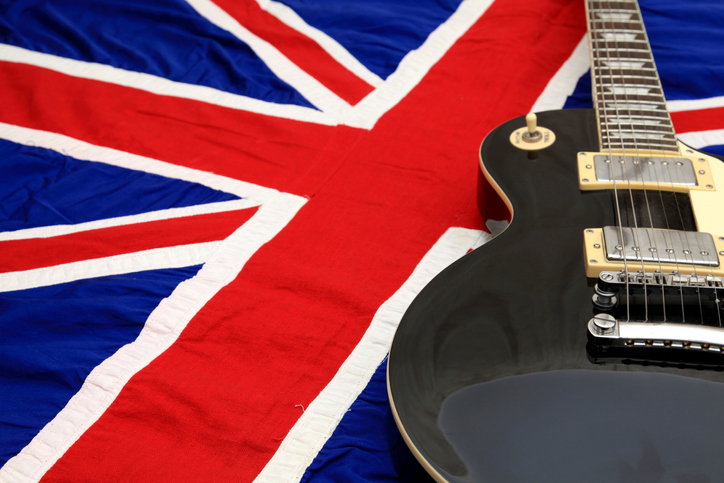
The British Invasion was started by the Beatles, of course, and was followed by a tsunami of amazing artists and groups who not only set the tone with their music, but dominated music, fashion, and pop culture. Every kid in the U.S. wanted to look like the “mods” we saw on Carnaby Street, London’s fast-growing retail area that rapidly became famous.
Here in the States, local music mattered – especially in Detroit where I grew up. Motown – typified by the Supremes, Temptations, Marvin Gaye, the Four Tops, Stevie Wonder, and the many groups that Berry Gordy groomed for stardom – dominated our airwaves and our lives. But so did the Beatles, the Stones, Gerry & the Pacemakers, the Animals, Kinks, Petula Clark. and the hundreds of others who became stars during this Golden Age of music.
In today’s music environment, it is hard to imagine just how much great music we had available to us a half century or so ago. No wonder Top 40 radio celebrated a heyday period that was to last decades and decades.
But music sales in the past few years suggest a very different trend forming – a sort of ethnocentrism that appears to be forming. The trend is for people from South Korea, for example, to embrace music from their “local” environs, for example, not to the exclusion of everything else, but in a way we’ve not seen before.
The research comes from Universal Music Group and their most recent annual revenue reports. A publication called Music Business Worldwide spotted the trend: 61% of UMG’s music sales now come from “local” artists – that is, artists that represent a consumer’s country of origin.
According to journalist Tim Ingham, France turns out to be a great example. In 2019, more than 90% of the best selling albums there were released by French artists – in fact, French speaking artists and groups.
All this is happening while music has become more global, thanks in no small part to services like Spotify and others that make it possible for us to discover and sample music from just about everywhere.
But the trend, illustrated by music conglomerate Vivendi tells the tale for UMG:
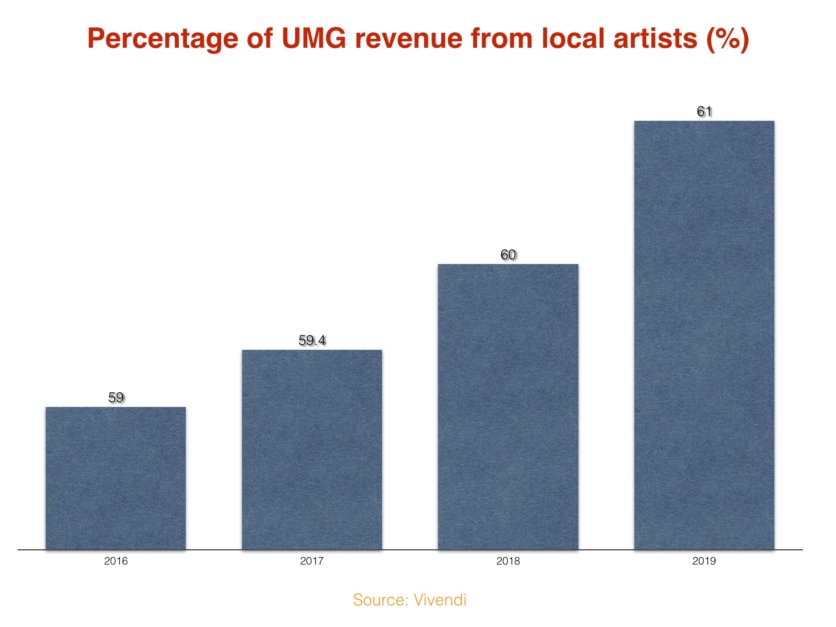
An important caveat about this chart, however: the scale is deceiving, making it look at first glance that the trend showing locals embracing music from their home countries is striking – when it fact, there’s only a 2% difference over the last four years.
Still, it is steadily increasing, suggesting that perhaps “the politics of everything” is having a bigger impact on our lives and our culture than perhaps we thought. We are more tribal than ever, gravitating to the culture and tastes that are in the air.
It also begs the question of whether the COVID outbreak might also be causing many of us to feel a greater sense of attachment – for better or for worse – to our zip codes, cities, counties, and regions where we live.
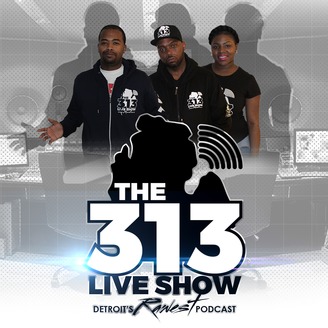 Certainly, the trend of marketing area codes has become highly popular and big business in recent years, spurring all sort of themed products and services that cater to locals.
Certainly, the trend of marketing area codes has become highly popular and big business in recent years, spurring all sort of themed products and services that cater to locals.
Yes, those of us who grew up in Southeast Michigan refer to ourselves as Detroiters, but there’s something even more special about coming from “the 313” (thanks, Eminem).
More and more, this appears to be a trend in taste, consumption, and of course, pride.
Does this have musical implications for radio stations, in particular? Is there an opportunity for “local music” shows to make a comeback on the airwaves?
Or even the kind of competitions where radio discovered the next 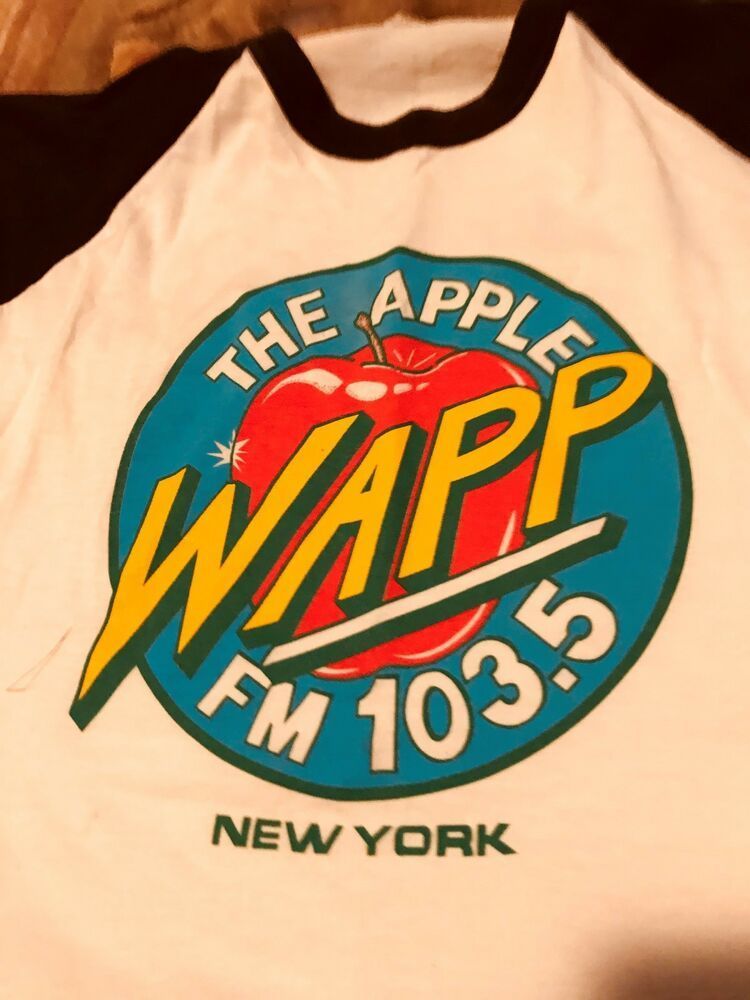 big local thing, as WAPP in New York City did back in 1987 when the winner of their local music was a 21 year-old kid from Perth Amboy, New Jersey, by the name of Jon Bongiovi. The song was “Runaway,” and the rest, as they say, is history.
big local thing, as WAPP in New York City did back in 1987 when the winner of their local music was a 21 year-old kid from Perth Amboy, New Jersey, by the name of Jon Bongiovi. The song was “Runaway,” and the rest, as they say, is history.
We know from the music research we’ve analyzed over the years that hometown heroes often have an edge.
Stevie Ray Vaughan usually tests better in Austin, Styx and REO Speedwagon dominate gold test rankers in Chicago, and of course, Seger, Kid Rock, and Lizzo are likelier to have higher scores and more love here in Detroit.
People tend to root for their locals – whether its sports teams or musical artists. And the concept of discovering an emerging artist in your station’s midst has even more appeal.
And wouldn’t you know it? Jeff Bezos apparently had this idea before I did. Last week, Amazon launched a new program called “Breakthrough.”
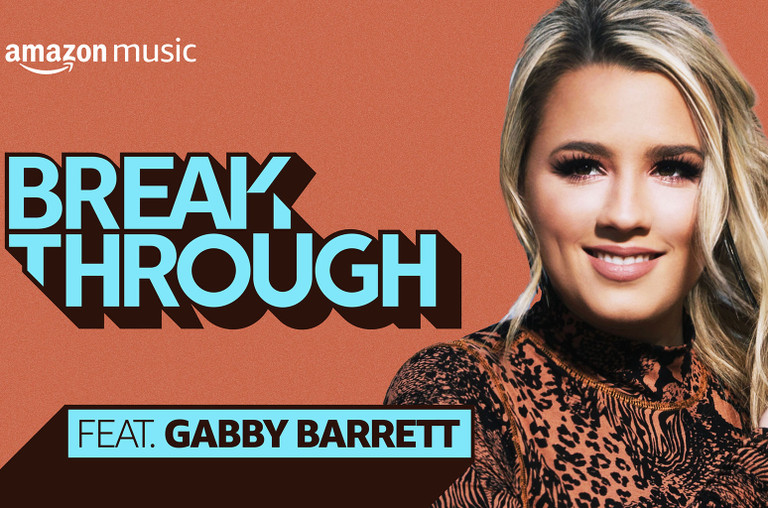
According to Billboard‘s Dan Rys, the new initiative features a half dozen up-and-coming stars from multiple genres. Gabby Barrett (right) is the Country representative.
Amazon will use its music platform to support these burgeoning stars, via playlists and featured programming, as well as on their popular Twitch platform.
As Amazon exec Kirdis Postelle explains:
“Developing artists are the lifeblood of this business: They shape culture, they define trends and a lot of times, labels aren’t in a position to support developing artists the way they like to…This program fills that void.”
And in the process, perhaps it’s an important step toward bolstering Amazon’s position as a new music discovery tool.
According to our most recent Techsurvey among core radio fans, Amazon Music has nowhere to go, but up.
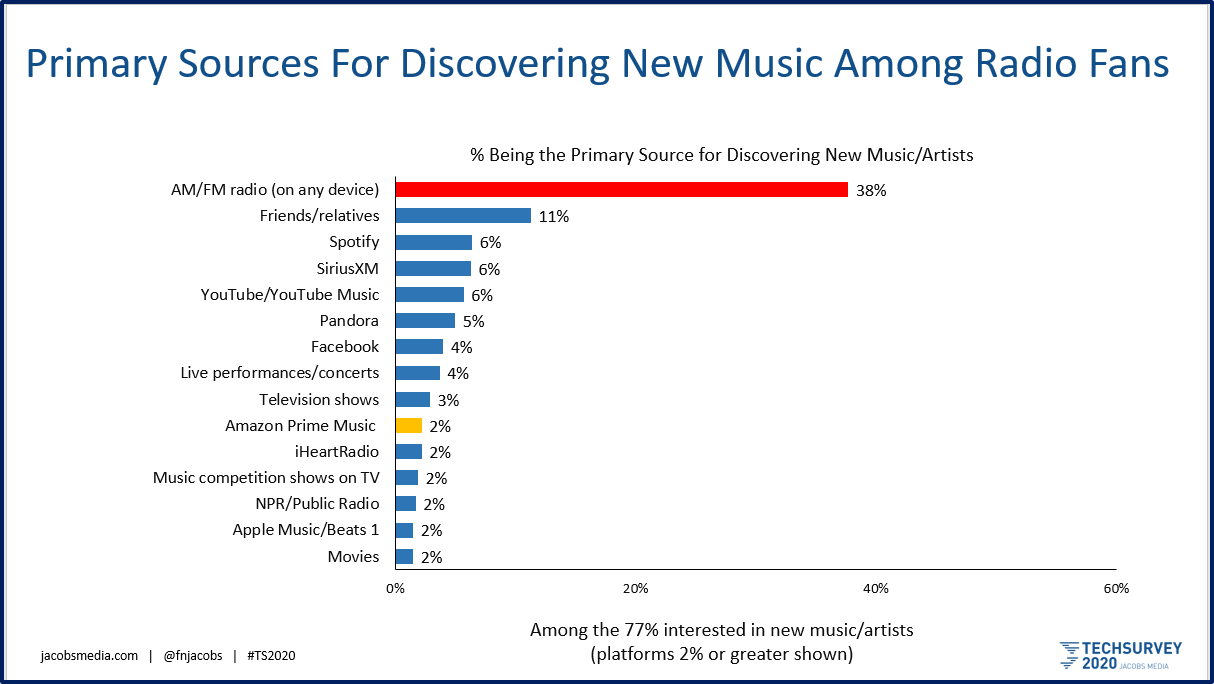
Yes, AM/FM radio dominates, but its hold on new music discovery has slipped precariously over the years. This marks the lowest level we measured. And as radio programmers know, formats like Alternative, Country, Rock and others – once famous for finding “the next big thing,” have veered away from this key attribute.
As the chart shows, while discovering that new artist or genre may be fragmented across many sources (we’re only showing those at 2% of higher here), Amazon obviously perceives an opportunity to win some “mindshare” for this important musical dimension.
On the “local” level, this is a “hill” for broadcast radio to lose. And given the increasing pride and connection consumers feel toward their communities, this might be another of those key differentiators for FM radio.
In recent months, we have seen the spark of innovation. iHeartRadio has launched stations that broadcast podcasts, and their new Black Information Network of a growing “carpe diem” spirit among radio companies.
Maybe this is that moment for that perennial loser FM station in the cluster to be flipped into an exciting new music discovery format that highlights emerging bands and deserving local artists.
What have we got to lose?
- Like A Pair Of Old Jeans - April 2, 2025
- What’s Fair Is Fair - April 1, 2025
- What’s On Your Bucket List? - March 31, 2025




More like “what have we lost already”, Fred. Kids these days aren’t even gravitating towards cable, much less terrestrial radio. Any new act trying to build a buzz do it by upping their social media game. That’s where it all begins now. I don’t think they even think about radio of any kind when they are envisioning their road to success, really. It’s all about streaming and/or social media numbers for them – and all the opportunities that may arise from those numbers.
Sadly for broadcast radio, it’s probably too late to even try and recapture that discovery role, even on some regional level. At this point, it’s very possible any of the streaming services is developing some algorithm that will act as the equivalent to YouTube’s local trending videos, but make it way more specific to any region. And once that happens, well…
Ricardo, perhaps I’m a radio guy in denial (I’ve been called worse!). Streaming hasn’t exactly been a panacea for music artists and groups, whether you’re Taylor Swift or Gabby Barrett. I agree that broadcast radio has rendered itself into irrelevance by ignoring kids. But I can’t help but wonder if that could change if radio actually provided programming content featuring mult-genre, diverse new music, a connection to their local community, and personalities who spoke to them. That may turn out to be a moot question given trends in radio. But that’s why I asked the questions. Thanks for the dialogue.
Yes, artists using social media well can make an impact for them, but don’t rule radio out yet.
Here in my little town, we’re playing two acts that are LOCAL — one band based here in our town, and a husband/wife duo who grew up here and now live in the nearest big city less than an hour from here. Their songs are just as good as anything we get from Nashville.
Both acts have told me they’re excited to get the airplay, and have had their fans contact them to tell them, “I’ve heard you on the radio!”
I’m not just relegating them to a local music show; both songs are in current rotation right now. They’re that good.
Don, this is encouraging to hear. In a diary market (or in towns with no ratings service), the “damage” is minimal AND the chance to embrace your local roots is appealing. Thanks for sharing the story.
My only criticism of radio is that it typically isn’t live and local enough. Automated streaming can’t compete with REAL live and local!
No, it cannot, Bob. Thanks for reading our blog.